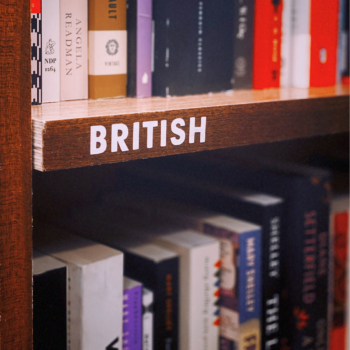Everyone who learns English eventually encounters differences that characterize British and American English. What are the most important ones?
Accent
The differences in accent between British and American English are among the most recognizable and significant discrepancies between them. Both accents also have their own regional variants, which can be very different from the standard version of English.
There are many regional accents in the United Kingdom, the most well-known of which is the British accent RP (Received Pronunciation). RP is a traditional accent used in England, especially in the world of business, education, and media. It is characterized by clear and precise pronunciation. Additionally, in various regions of the United Kingdom, there are other accents, such as Cockney in London, Geordie in Newcastle, or Scots in Scotland. Each of these accents has its own phonetic characteristics and pronunciation.
There are also many regional accents in the United States. Unlike the British RP accent, which has a more standard and formal pronunciation, American accents are decidedly more diverse. The so-called Southern accent is characteristic of entire states, for example, Texas or Louisiana, while the New York accent is used almost exclusively in New York. Another known accent is the Californian accent, especially in the Hollywood area. Many Americans also have the so-called General American Accent, which is considered more neutral and not tied to a specific region.
It’s worth remembering that both British and American accents have many variants and subtle differences in pronunciation depending on the region, social class, age, or ethnic origin of the speaker. Thanks to them, the English language is very diverse and carries important cultural contexts.
Pronunciation
There are significant differences in pronunciation between the American and British versions of the English language.
One of the main differences is the pronunciation of the consonant “r”. In American English, “r” is usually pronounced clearly, even when it is at the end of a word. This means that in words like “car” or “park” a clear “r” is pronounced. On the other hand, in British English “r” is usually only clear at the beginning of a word, and is omitted or less clear at the end and within words. For example, the word “car” can be pronounced as “cah” or “kaa” depending on the region.
American and British English also differ in the pronunciation of the consonant “t” in some contexts. In American English, when “t” occurs in the middle or at the end of a word, it is pronounced more sharply and clearly, for example in words like “water” or “better”. In British English, “t” can be pronounced more softly or omitted altogether in these same words.
We will also encounter differences in the pronunciation of several vowels. This applies, for example, to the vowel “u”, which in British English is closer to the sound “ju”, while in American English it resembles “oo”. For example, the word “tube” will sound more like “tju:b” in British English, and as “tu:b” in American English. The pronunciation also differs in the case of vowels “o” or “a”.
You can read more about pronunciation in the British and American variants in the article: British and American pronunciation: Say It Better. How to learn it?
Vocabulary
Despite most of the vocabulary being common, there are certain differences in the words and idioms used in British and American English. This applies to terminology from practically every area of life: transport, food, everyday appliances, etc.
Below are a few examples:
| British English | American English |
| motorway | highway |
| caravan | trailer |
| petrol | gas |
| candyfloss | cotton candy |
| chips | French fries |
| tin | can |
Certainly, it is worth noting that due to the interpenetration of American and British culture, these differences are gradually blurring and we should be well understood, even when we use a term from a different variant of English.
Spelling
The last discrepancy between British and American English that we want to discuss is spelling. The differences here mainly concern the spelling of endings and double consonants. Below we summarize the most important rules with examples:
“og” – “ogue”
In some words where “ogue” appears in British English, “og” is written in American English. For example: “catalog” (American) – “catalogue” (British), “dialog” (American) – “dialogue” (British).
“er” – “re”
In some words where “re” appears in British English, “er” is written in American English. For example: “center” (American) – “centre” (British), “meter” (American) – “metre” (British).
“or” – “our”
In many words where “our” appears in British English, “or” is written in American English. For instance: “color” (American) – “colour” (British), “favor” (American) – “favour” (British).
“ze” – “se”
In some words where “se” appears in British English, “ze” is written in American English. For example: “analyze” (American) – “analyse” (British), “apologize” (American) – “apologise” (British).
Double consonants
In some words where a single consonant appears in British English, an additional consonant is added in American English. For example: “traveling” (American) – “travelling” (British), “canceling” (American) – “cancelling” (British).
Master the pronunciation with SuperMemo
Do you want to master the pronunciation in your chosen variant of English perfectly? Check out our online courses from the Say it better series: American pronunciation course and British pronunciation course. With them you will learn how to speak like a native. British and American English will have no secrets for you!



